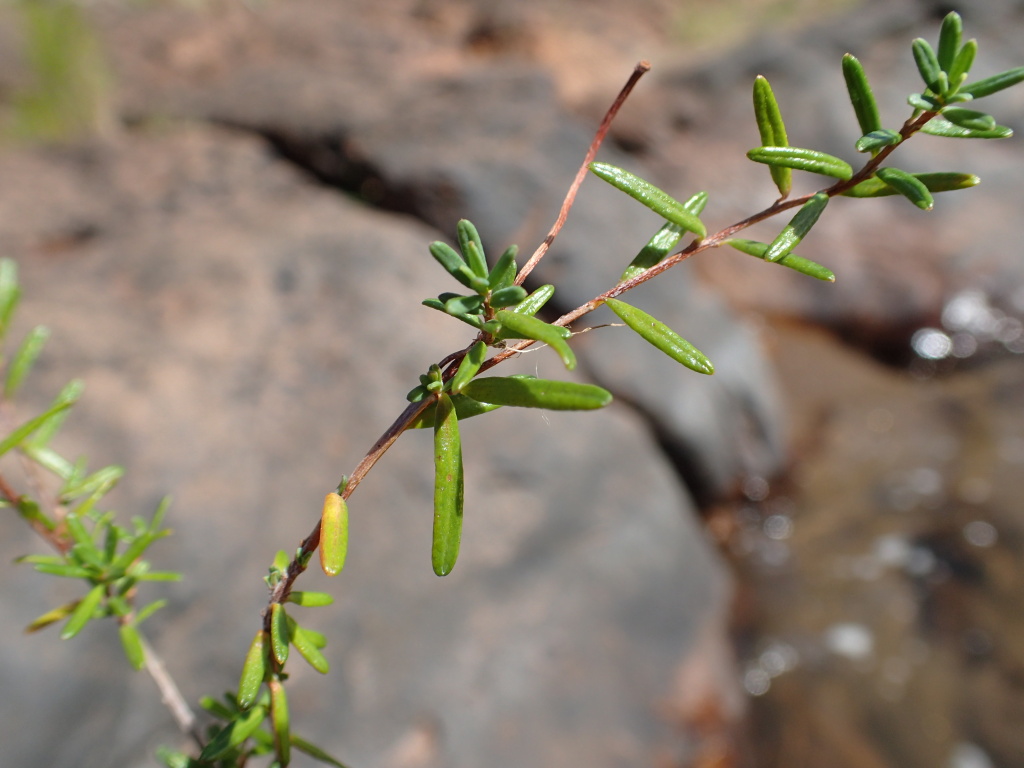Hibbertia exponens
ToelkenSparsely branched, spreading to decumbent shrubs; branches to 30 cm long, pubescent, sometimes only sparsely so. Vestiture of non-persistent simple hairs. Leaves linear-oblanceolate to linear-elliptic, (2.6–)4.5–6.5(–8.5) mm long, 0.5–0.8(–1) mm wide, puberulent to glabrescent; petiole 0.2–0.5 mm long; apex acute, with a few short, non-persistent hairs on the end of the vein; margins revolute, distant from narrow central vein. Flowers on peduncles (4.5–)5–7.5(–11) mm long, terminal, with 1–3 linear-lanceolate bracts 2.4–4 mm long; sepals 4.8–5.5(–5.8) mm long, unequal, puberulent to glabrescent; petals obovate 5–8 mm long, yellow; stamens 18–26, sometimes with a few staminodes; filaments free but often dilated basally; carpels 3, tomentose. Flowers Nov.–Dec.(–Apr.)
EGU. Currently known only from the vicinity of the upper Snowy River (north of Buchan) where recorded as growing on rocky or sandy riverbanks in riparian scrub.
Hibbertia exponens closely resembles H. dispar, but may be distinguished by the greater number of stamens that are arranged around the ovary, and the relatively narrow central vein that does not touch the recurved leaf margins, exposing the lamina on the lower surface of the leaves.
 Spinning
Spinning
